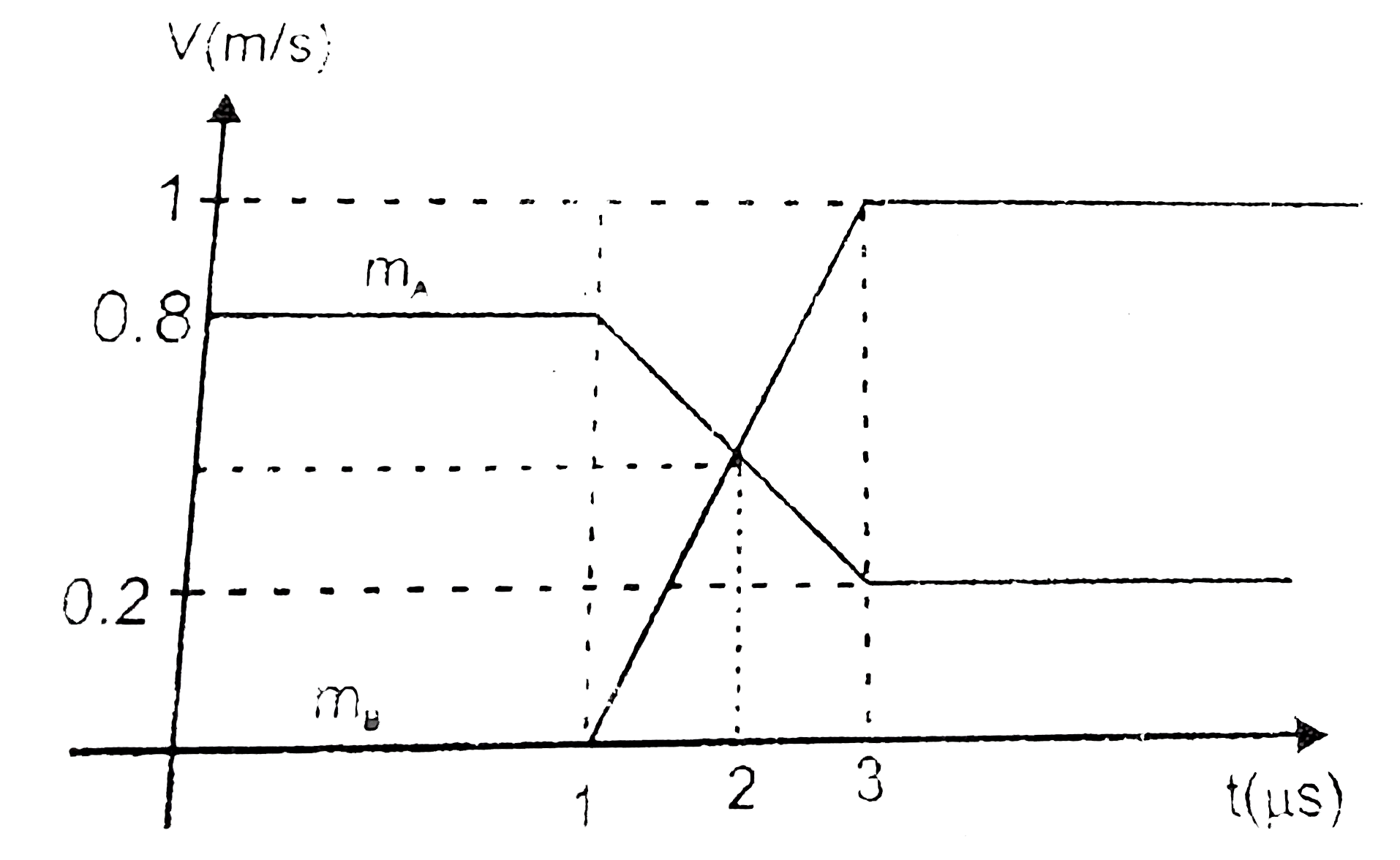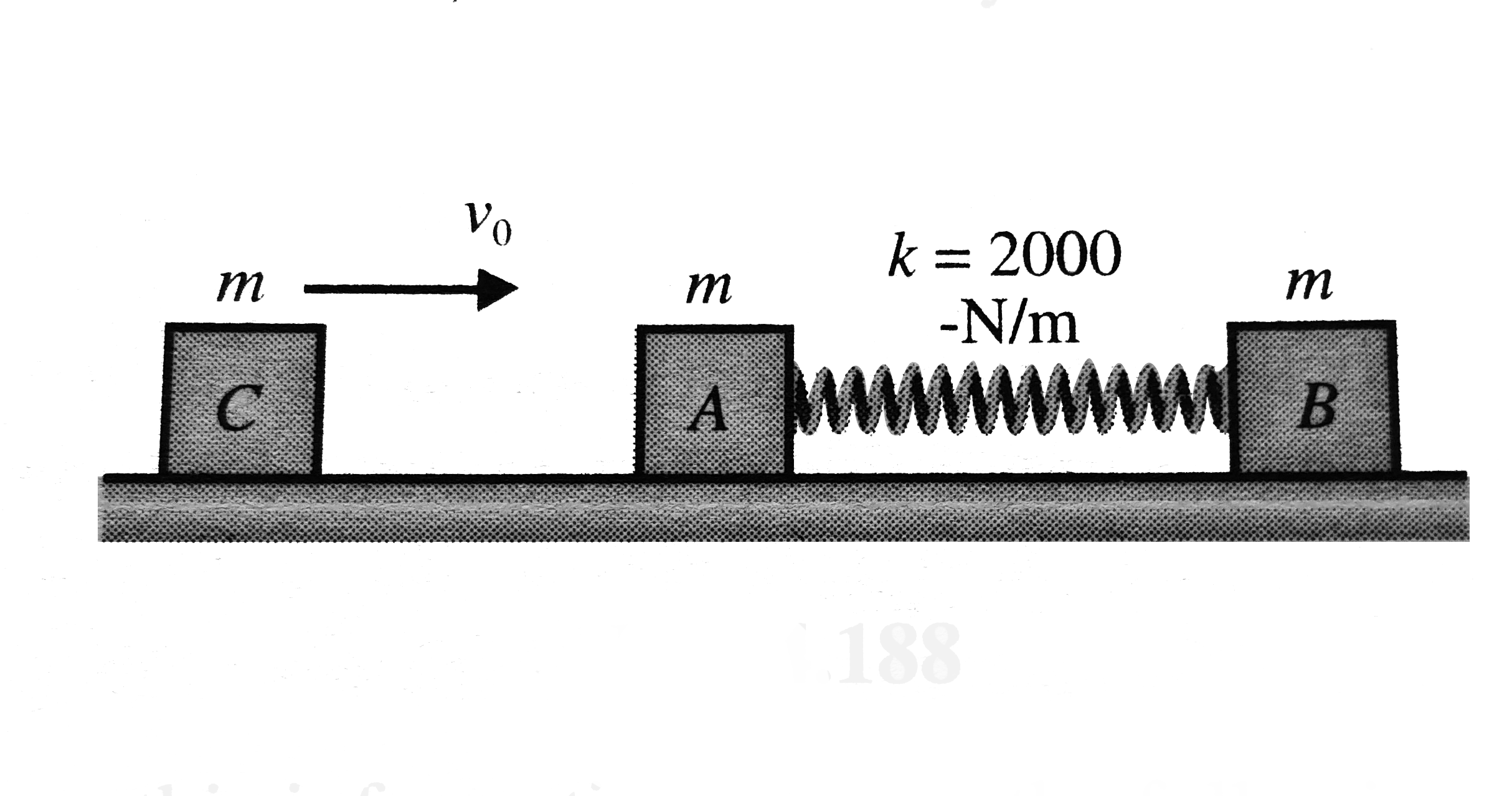There are two blocks A and B placed on a smooth surface. Block A has mass 10 kg and its is moving with velocity 0.8 m/s towards stationary B of unknown mass. At the time of collision, their velocities are given by the following graph :

Maximum deformation potential energy is :
1.2 J
3.2 J
2.0 J
1.6 J
The correct Answer is:A
mA×0.8=mA×0.2+m0×1.0
mA×0.6mB×1.0mB=0.6mA
e=1−0.20.8=1=1.5
Id=6×0.5−6×0=3N−5=10×(0.8−0.5)=10×0.3=3NS
ΔU=12×10×(0.8)2−12×16×(0.5)2=5
×0.648×0.25=3.2−2.0=1.2J.
Topper's Solved these Questions
- DAILY PRACTICE PROBLEMBOOK - RESONANCECHAPTER - DAILY PRACTICE PROBLEMEXERCISE - DPP No.66
20 Videos
- DAILY PRACTICE PROBLEMBOOK - RESONANCECHAPTER - DAILY PRACTICE PROBLEMEXERCISE - DPP No.67
10 Videos
- DAILY PRACTICE PROBLEMBOOK - RESONANCECHAPTER - DAILY PRACTICE PROBLEMEXERCISE - DPP No.64
20 Videos
- CURRENT ELECTRICITYBOOK - RESONANCECHAPTER - CURRENT ELECTRICITYEXERCISE - High Level Problems (HIP)
21 Videos
- ELECTRO MAGNETIC WAVESBOOK - RESONANCECHAPTER - ELECTRO MAGNETIC WAVESEXERCISE - Exercise 3
27 Videos
Similar Questions
Two smooth spheres A and B of masses 4kg and 8kg move with velocities 9m/s and 3m/s in opposite directions. If A rebounds on its path with velocity 1m/s, then
View SolutionBlock A of mass m is placed on a smooth surface and block B of mass km (k<1) is projected towards other end of block A. If work done against friction is n times the initial kinetic energy of block B, the graph between k and n is

View Solution
Knowledge Check
There are two blocks A and B placed on a smooth surface. Block A has mass 10 kg and its is moving with velocity 0.8 m/s towards stationary B of unknown mass. At the time of collision, their velocities are given by the following graph :

Impulse of deformation is :A1 NsB3 NsC6 NsD5 NsThere are two blocks A and B placed on a smooth surface. Block A has mass 10 kg and its is moving with velocity 0.8 m/s towards stationary B of unknown mass. At the time of collision, their velocities are given by the following graph :

Coefficient of restitution of the collision isA1.5B1C0.5D0.8There is a head on collision between two bodies A and B. The mass of A is 5 kg and it is moving with a velocity of 4m/s towards right. The mass of B is 4 kg and it is moving with a velocity of 5m/s in the opposite direction. After collision, they stick together. What is their common velocity after collision?
A1 m/s towards leftB54 m/s towards rightC45 m towards leftDzero
Two balls A & B of mass m1 and m2 are kept on a horizontal smooth surface. A is given a velocity towards B so that they perform head on collision
View SolutionA body of mass 2 kg is moving with velocity 10 m / s towards east. Another body of same mass and same velocity moving towards north collides with former and coalsces and moves towards northeast. Its velocity is
View Solution
Two identical blocks A and B, each of mass m=3kg, are connected with the help of an ideal spring and placed on a smooth horizontal surface as shown in Fig. Another identical blocks C moving velocity v0=0.6ms collides with A and sticks to it, as a result, the motion of system takes place in some way
Based on this information answer the following questions:
Q. After the collision of C and A, the combined body and block B would
View SolutionIn the shown figure both blocks are in equilibrium m=1 kg. a bullet of mass m moves with velocity 10m/s and get embedded into the block A, then just after collision :

View SolutionA block of mass 1kg kept over a smooth surface is given velocity 2m/s towards a spring of spring constant 1N/m at a distance of 10m. Find after what time block will be passing through P again
 .
.
View Solution
